You will be met on arrival at Kruger Mpumalanga International Airport, and transferred to Mala Mala Main Camp. For flights or road transfers from Johannesburg to Hazyview / Kruger Mpumalanga Int. Airport, please contact us for information and rates.
The transfer to Mala Mala will take you through the Sabi Sand, by many claimed to be South Africa's prime safari destination. MalaMala Main Camp is the oldest and most historical private game reserve in South Africa and the first to make the transition from hunting to photographic safaris. It is the blueprint on which the South African safari industry was built. Every aspect of the MalaMala Main Camp is designed to appreciate and enjoy the view of the surrounding wilds. Pathways wind their way along the perimeter of the camp to reveal individual ochre colored units tucked into the greenery which flanks the Sand River. Massive trees and rolling green lawns are filled with birdsong, with the occasional antelope or elephant which seeks the succulence of greenery. The camp is unfenced – an oasis in the middle of the bushveld.
Check in to your luxury room. Most rooms can be converted to offer 2 single, separated beds. On arrival at the camps within the reserve, guests are introduced to their ranger who acts as host, guide and educator. While an itinerary is suggested to take advantage of the more comfortable temperature ranges and the enhanced game viewing opportunities, it is also important to have time to relax and enjoy the camp surroundings, and to immerse oneself in the environment. Provided you arrive in time, set out on your first photo safari this afternoon. Return to the lodge for dinner.
What to bring:
Camera DSLR / mirrorless
Lenses 300 mm or longer
Lens for landscape 16 - 35mm (preferably f2.8) - lenses need lens hoods
Cover for dust and rain
Tripod
4x Memory cards (32 GB or more)
Ideally also bring Laptop with Lightroom and / or Photoshop
Card reader
Lens cleaning kit
Note block and pen
Also important to consider:
Binoculars
Sun block factor 30 or higher
Cap / sunhat
Light walking shoes
Shorts
Swimming costume
Rain jacket
Warm jacket (fleece) - sitting on an open safari vehicle at sunrise can be chilly!
If travelling during winter (April - October), also bring windproof jacket and scarf. It can be very cold early morning and evening on the open safari vehicle!
It is essential that you travel with adequate medical travel insurance, which should also include special medical evacuation cover.
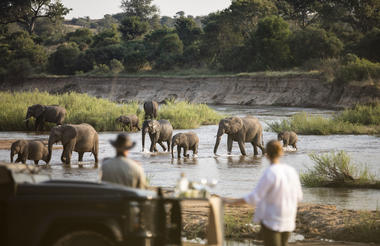


MalaMala Game Reserve is the Safari Industry’s blueprint to the luxury photographic safari. This enormous tract of land offers unparalleled wildlife viewing. MalaMala is the only game reserve in this region where the benefits of tourism directly support adjacent communities.
“Not even Tanzania’s famed Serengeti Game Reserve or the awesome Ngorongoro Crater fills your camera viewfinder faster with Africa’s legendary Big Five – at MalaMala, lion, leopard, buffalo, rhinoceros and elephant appear magically,” says acclaimed wildlife photojournalist Geoff Dalglish in his Sunday Times review. “Nor could Hollywood script the wide-screen wildlife encounters any more dramatically or frequently than nature does routinely in the private game reserve that is arguably South Africa’s most famous internationally.”
MalaMala Game Reserve is the Safari Industry’s blueprint to the luxury photographic safari. In existence since 1927, this massive thriving tract of land produces the most exciting wildlife experience this side of the equator. MalaMala Game Reserve is the largest private Big Five game reserve in South Africa. Comprising 13 300 ha (33 000 acres), MalaMala shares a 19 km (12 mile) unfenced border with the world-renowned Kruger National Park, and lies strategically sandwiched between the National Park and the Sabi Sand Reserve.
For nearly nine decades, the custodians of this land have remained focused to preserve and protect this special piece of Africa. Allowing nature to move to its innate rhythm, guests experience today what the forefathers of the African Safari would have experienced at the turn of the century. This philosophy has paid off, as experienced by a veritable collection of photojournalists and film-makers who have made MalaMala their destination of choice to capture footage of wildlife viewing that would rival any Hollywood production for thrilling and breathtaking animal encounters.
Lion, Leopard, Elephant, Buffalo and Rhinoceros – the most sought after and dangerous of the world’s big game. In previous centuries it was these five species which gripped the imagination of hunters and sportsmen, drawing them to Africa to experience the blood pounding thrill of hunting and shooting “The Big Five”. It is in reserves like MalaMala where this hunting and shooting still takes place, only the hunting is done by experienced rangers, and the shooting is done with cameras. But it does not mean that the thrill and exhilaration of encountering these animals in an open Land Rover is any less gripping.


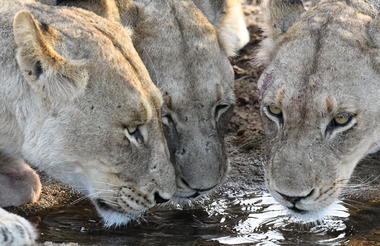
Each day at your photo safari lodge will follow more or less this programme (excluding arrival and departure day):
Early morning Wake up with tea / coffees and snacks - Morning game drive: (3 hours)
A photo safari morning starts a little before sunrise! For many, this is a big challenge, but nevertheless imperative, in order to take full advantage of the golden morning light which embellishes most wildlife and nature images. This is also the time of day when most animals are active, so the mornings should give you some great opportunities for capturing striking images. Remember, there is more to wildlife photography than lions; e.g. "the little things"!
An early wake-up call is usually made approximately 30 minutes ahead of departure. This allows for a quick wash and a hot beverage just to get those creative juices flowing….
After a pre-check and briefing by your photo guide (including giving some suggestions for camera settings and a brief over-view of what to expect on the drive), we set off. Your guide is always available on the vehicle to provide constructive suggestions and individual help during the actual drive.
About midway through the morning drive we take a comfort / coffee break in a safe area, to allow guests to stretch their legs and enjoy a hot beverage and some biscuits/rusks etc
Your photographic guide will help you with the camera settings for each specific situation and condition. You need to understand the basic photography terms such as aperture, shutter speed, ISO, metering, drive modes, focus selection points, etc. It is also important to know where and when you should change these settings (with wildlife photography you may miss the special shot if you are fumbling with your camera looking for which button to adjust).
Topics of Importance for Wildlife Photography:
- knowing your subject (the more you know about your subject, i.e. animal, the more likely you are able to predict its whereabouts and actions)
- Getting the shot perfect in the field – without having to do lots of editing in Photoshop afterwards
- using RAW for maximum results
- how and when to use autofocus / manual focus
- controlling Depth of Field
- settings for night (low light) photography
- focusing on the eyes
- know what you want the image to say. Have the images got a special feeling? Do they tell a story?
- composition: Rule of thirds
- use a flash: during day and night
- mastering birds in flight
- importance of supporting your camera
The morning game-drive usually takes about 3 hours (depending on what we see), and we then return to the lodge for a delicious brunch / late breakfast.
Between Breakfast/Brunch and Lunch/High Tea
After breakfast, photo safari guests may retire to a quiet, private corner of the camp to assess the morning results. There will be free time or optional lectures on editing (Photoshop / Lightroom) as well as photography tips and tricks, depending on the group and their preferences. Edit images for the presentation of your best 3 images (which will be held after dinner).
What else? How about read a book, sleep or just sit still and listen to the sounds of raw nature?
Late Lunch / High Tea
We meet again early afternoon for a light meal, before setting off on the afternoon Game Drive (minimum 3 hours). Similar to the morning game drive, we try to find our subjects to photograph. The photo-guide will help you with some tips and tricks for sunset and night photography, and using flash and lights to enhance your shot. Just before twilight, a safe area is located for evening sundowners, where alcohol or soft beverages are served with lights snacks. (Drinks on the drive are usually pre-ordered before the drive sets out).
After sundowners, the guests will experience driving in darkness with a vehicle spotlight to find interesting animals/owls etc, then returning to camp.
Return to lodge after Sunset - Dinner
Time for a quick freshen up before we meet for dinner. Dinner could be a plated dinner, a buffet meal or a traditional African “Braai” (Barbeque) often served in an outside boma around an open fire.
After dinner we meet for maximum 1 hour. We will discuss and evaluate the 3 chosen images per photographer, from the last 2 game drives. These images are displayed for the group to see, with each image being discussed as a group and critiqued by your photo guide. It is NOT a competition, but an opportunity to learn by gaining an understanding of what constitutes a good image.
Bed time: a well-deserved rest after this exciting day in the African Bush. Remember, early start tomorrow!
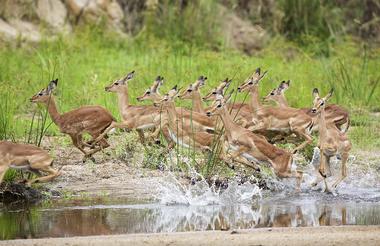
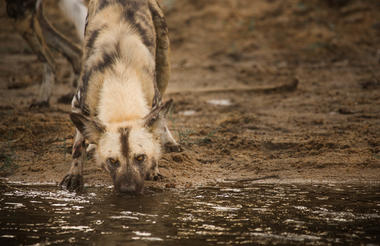
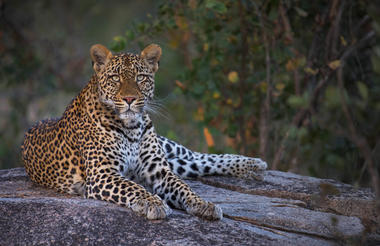
A full day's photo safari programme similar to the previous days, but maybe with a very special sighting?



After breakfast and your last morning photo safari, you will be collected by your transfer representative and transferred to Kruger Mpumalanga International Airport.

